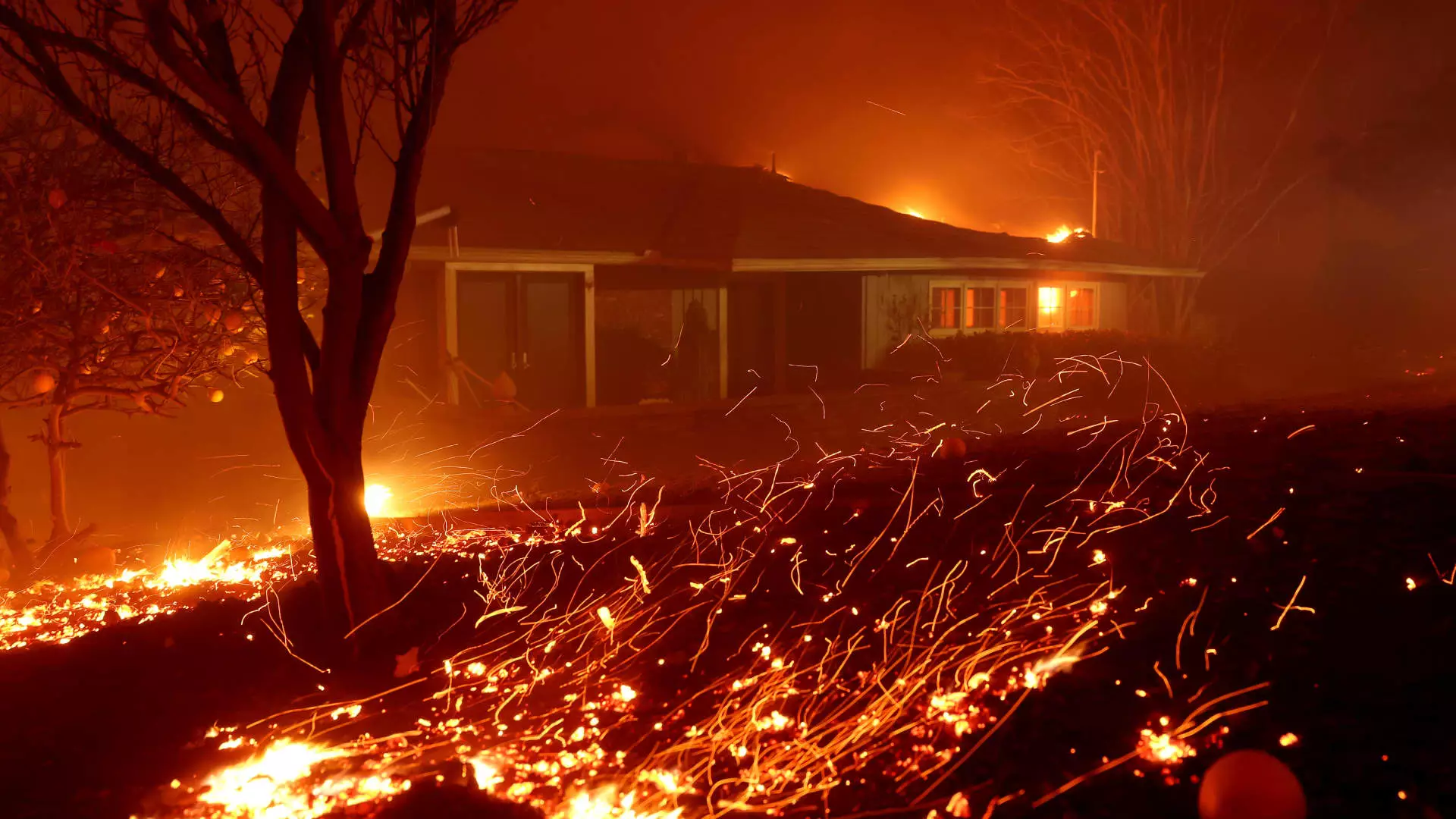The impact of climate change on financial markets has escalated into a pressing concern, particularly regarding the future of real estate. While immediate damages caused by recent wildfires in Los Angeles remain difficult to quantify, trends suggest that the ramifications for insurance costs are set to reverberate throughout the national housing market. Data from climate-risk experts illuminates a dismal projection: up to 84% of U.S. homes are estimated to experience a decline in value by 2055, leading to staggering losses estimated at $1.47 trillion. The real estate landscape is no longer merely affected by erratic weather; it is being fundamentally transformed by the very nature of climate-related risks.
Insuring the Future: Rising Costs and Financial Strain
Insurance will undoubtedly become more expensive in the years to come, with a national average hike of about 25% anticipated over the next three decades. Of that increase, a significant portion—14%—is attributed to the historical underpricing of risk by insurers, while the remaining 11% is a direct consequence of the escalating peril posed by climate change. The phenomenon is not uniform across the nation; although the average decline in property value stands at circa 3%, distinct regions, primarily in Texas, Florida, and Louisiana, could face reductions in home values amounting to almost 50%.
This escalating cost of insurance poses a dual threat to homeowners: not only will property taxes and insurance premiums climb, but the very essence of homeownership could become a financial liability rather than an asset. This mounting financial pressure leads to a broader concern: as affordability wanes, the equilibrium of the real estate market may be disrupted, triggering a chain reaction of declining property values and increased foreclosures. Dave Burt, founder of DeltaTerra Capital, succinctly encapsulates the sentiment when he suggests a grim forecast—within five years, around 20% of U.S. homes could see value reductions of up to 30%.
Past Predictions and Present Realities
The parallels between the current climate risk landscape and previous financial crises are striking. Burt, a seasoned analyst who identified the subprime mortgage risks nearly two decades ago, asserts that the markets are now witnessing a similar fate. He cautions against underestimating the potential for economic erosion fueled by climate chaos, much akin to what transpired during the Great Recession. The ramifications extend beyond individual homeowners; entire communities may fall under the shadow of rising insurance premiums and property devaluation, altering their fiscal responsibilities and standard of living.
Legislative sentiments, such as those expressed by Senator Sheldon Whitehouse, further underscore the gravity of the situation. In recent hearings, he pointed out the emerging threats from the insurance sector, emphasizing that natural disasters are radically shifting the parameters of real estate transactions. The emerging trend is stark: as fire, storm, and flood increasingly become routine characteristics of life, the ability to secure mortgages may diminish along with property values, resulting in a challenging landscape for potential buyers and existing homeowners.
Compounding these woes is the ambivalence of major mortgage agencies. Notably, Fannie Mae has shown reluctance to integrate climate risk into its underwriting process, leading to insufficient awareness among consumers regarding potential future insurance costs. This development is concerning, as it suggests a disconnect between the realities of climate risk and the traditional financial apparatus that has long governed the housing market. In the face of rising climate disasters, the importance of adaptive routing in financial decision-making is becoming ever more critical.
Meanwhile, Burt’s firm is actively assisting clients in navigating this uncharted territory. They provide tools and strategies to hedge against rising risks, suggesting the use of innovative financial products like mortgage credit derivatives. Informative services aimed at clarifying the climate risk landscape may be pivotal in helping institutional investors make informed decisions.
The sentiment that insurance costs will chiefly dictate home price declines is only partly accurate. Local governments may respond to increased risks by raising taxes to fund resilience initiatives, while heightened maintenance and energy expenses could further burden homeowners. For instance, municipalities that bolster flood defenses for public infrastructures will inevitably pass along some of the costs to residents.
Normalization of these cost increases will inevitably reshape what it means to own property in an environment fraught with climate challenges. As the patterns of real estate value fluctuate, some families may find themselves trapped in properties that are increasingly difficult to sell or refinance.
The convergence of climate change dynamics with real estate indicates a challenging future for homeowners in Los Angeles and beyond. The looming specters of heightened insurance premiums, declining property values, and the urgency for structural resilience call for proactive solutions from both policymakers and private investors. Without immediate intervention, the once-stable landscape of real estate could suffer monumental shifts, driven by the reckoning with climate realities that are upon us.

